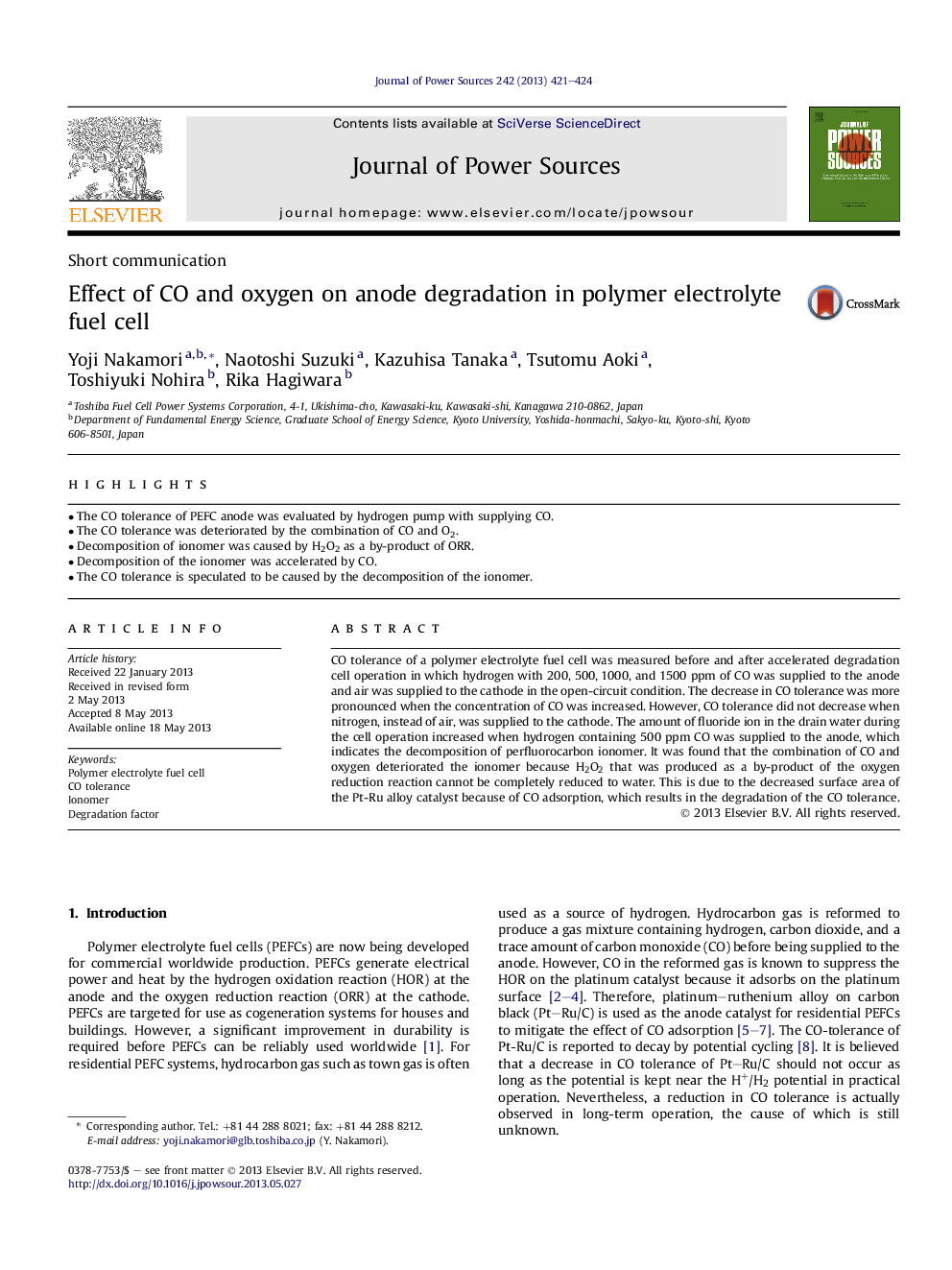| Article ID | Journal | Published Year | Pages | File Type |
|---|---|---|---|---|
| 7739550 | Journal of Power Sources | 2013 | 4 Pages |
Abstract
CO tolerance of a polymer electrolyte fuel cell was measured before and after accelerated degradation cell operation in which hydrogen with 200, 500, 1000, and 1500Â ppm of CO was supplied to the anode and air was supplied to the cathode in the open-circuit condition. The decrease in CO tolerance was more pronounced when the concentration of CO was increased. However, CO tolerance did not decrease when nitrogen, instead of air, was supplied to the cathode. The amount of fluoride ion in the drain water during the cell operation increased when hydrogen containing 500Â ppm CO was supplied to the anode, which indicates the decomposition of perfluorocarbon ionomer. It was found that the combination of CO and oxygen deteriorated the ionomer because H2O2 that was produced as a by-product of the oxygen reduction reaction cannot be completely reduced to water. This is due to the decreased surface area of the Pt-Ru alloy catalyst because of CO adsorption, which results in the degradation of the CO tolerance.
Related Topics
Physical Sciences and Engineering
Chemistry
Electrochemistry
Authors
Yoji Nakamori, Naotoshi Suzuki, Kazuhisa Tanaka, Tsutomu Aoki, Toshiyuki Nohira, Rika Hagiwara,
